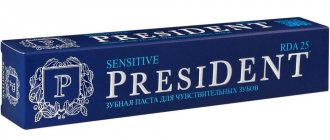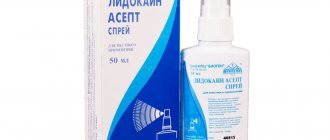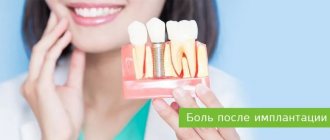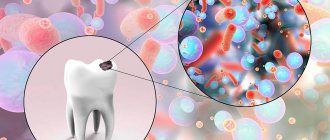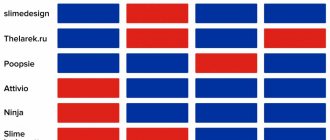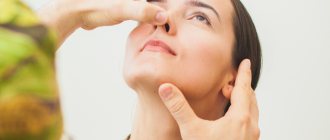The drug belongs to the subgroup of antifungal agents. Nystatin tablets are used to suppress the activity of fungus that affects the mucous membranes of the gastrointestinal tract, genitals, and oral cavity. The product is not suitable for patients under 13 years of age, pregnant or lactating women.
The medicine is made in tablets with a yellowish-greenish coating. Each contains 250 or 500 thousand units of nystatin. Additional components are presented:
- talc;
- hypromellose;
- titanium dioxide;
- calcium stearate;
- lactose;
- copolyvidone;
- tartrazine;
- vanillin;
- corn starch.
Nystatin inhibits the activity of Candida and Aspergillus. The active component is embedded in the membrane of mycotic cells and forms channels through which electrolytes flow. The result of the action is increased osmolar pressure, which disrupts the functioning of fungi. Getting used to the drug occurs slowly.
Composition and release form
| Film-coated tablets | 1 table |
| nystatin | 250000 units |
| 500000 units | |
| excipients: milk sugar; basic magnesium carbonate; OPMC; calcium stearate; potato starch; MC−16; titanium pigment dioxide; twin 80; Trolein O; Vaseline oil; vanillin |
in dark glass jars or polymer jars, 20 pcs.; in a cardboard pack 1 jar.
| Suppositories for rectal use | 1 sup. |
| nystatin | 250000 units |
| 500000 units | |
| excipients: parahydroxybenzoic acid propyl ester; food grade citric acid; Vaseline oil; vitepsol H-15; vitepsol W−35 |
in a blister pack 5 pcs.; in a cardboard pack 2 packs.
| Vaginal suppositories | 1 sup. |
| nystatin | 250000 units |
| 500000 units | |
| excipients: parahydroxybenzoic acid propyl ester; food grade citric acid; vitepsol N−15; vitepsol W−35 |
in a blister pack of 5 pcs.; in a cardboard pack 2 packs.
| Ointment | 1 g |
| nystatin | 100000 units |
| excipients: anhydrous lanolin; Vaseline medical |
in tubes of 30 g; in a cardboard pack 1 tube.
Adverse reactions and overdose
Unusual effects on Nystatin treatment may occur at high dosages of the drug. Patients complain:
- for attacks of nausea with vomiting;
- heartburn and diarrhea;
- painful sensations in the abdomen;
- feverish conditions accompanied by chills;
- nettle fever, redness, obsessive itching, skin rashes;
- dry nonproductive cough, tachycardia, soreness in muscle tissue.
The appearance of side effects requires a visit to the doctor and a change in the initial therapeutic regimen with a reduction in dosage. If the measures do not give the expected result, then the medication is discontinued.
Clinical manifestations of overdose appear in cases where the patient has consumed more than 5 million units of the drug per day. The patient experiences attacks of nausea, headache, and vomiting. Treatment consists of gastric lavage and taking activated carbon (1 tablet per 10 kg of weight). Nystatin therapy is discontinued.
Directions for use and doses
Inside, regardless of food intake. Adults: 500,000 units 4–8 times a day. For generalized candidiasis, the daily dose is increased to 6,000,000 units. Children aged 1 to 3 years - 250,000 units 3-4 times a day, over 13 years - 250,000-500,000 units 4 times a day. The course of treatment is 10–14 days. If necessary, the course can be repeated after a week.
Rectally, deep into the rectum, 1 suppository 2 times a day (morning and evening). The course of treatment is 10–14 days. The duration of treatment and the need for repeated courses is determined by the doctor.
Vaginally, after hygienic procedures - 250,000–500,000 units 2 times a day (morning and evening). The course of treatment is 10–14 days.
Locally, the ointment is applied in a thin layer to the affected areas of the skin and mucous membranes 1–2 times a day, daily for 7–10 days. Can be combined with taking the drug orally.
Indications and contraindications for Nystatin therapy
Treatment procedures for adult patients are prescribed for the development of candidiasis, affecting the mucous membranes of the esophagus, digestive tract and vagina. Nystatin therapy is carried out for skin lesions; the drug can be used to prevent the development of fungal infections in patients after antibiotic therapy, with weakened immunity or immunodeficiency.
The instructions allow the use of the medication in children over 12 years of age for the above indications. Tablets are not used during pregnancy due to the high risk of toxic effects. If medical procedures are needed by a nursing mother, then the child is weaned off the breast for the entire period.
Nystatin is contraindicated for people with individual intolerance to the component composition, with a gastrointestinal ulcer or systemic fungal infection.
Compound
Active substance: nystatin – 55.5 mg (250,000 units) or 111 mg (500,000 units).
Excipients: lactose monohydrate (milk sugar), magnesium hydroxycarbonate (basic magnesium carbonate), hypromellose (hydroxypropyl methylcellulose), calcium stearate, potato starch.
Excipients of the shell: lactose monohydrate (milk sugar), hypromellose (hydroxypropyl methylcellulose), titanium dioxide, polysorbate 80 (Tween 80), magnesium hydrosilicate (talc), vanillin, quinoline yellow dye, E 104, tropeolin O dye.
Price
The cost of the drug is largely determined by its release form. Thus, the price of Nystatin tablets in pharmacies varies between 20-25 rubles, while, for example, suppositories with a similar active substance cost 2-3 times more. At a lower cost, the drug can be ordered in virtual pharmacies, according to the catalog presented on such sites. Remember: medications purchased from online stores with a suspicious reputation often do not have the effects stated in the instructions.
Check prices for Nystatin in Moscow pharmacies in advance - they are shown in the table:
| Release form | Price, rubles |
| Nystatin TB 250000IU N20 | 14-16 |
| Nystatin TB 500000IU N20 | 20-27 |
| Nystatin suppositories vag. 250 mg No. 10 | 22-25 |
| Nystatin suppositories vag. 500 thousand units No. 10 | 59-63 |
| Nystatin sup. rectal 250000 units strip, 10 pcs | 149-155 |
| Nystatin sup. rectal 500000 units contour. cells pack, 10 pcs. | 188-195 |
| Nystatin ointment 100000 units/g 15g | 41-43 |
| Nystatin ointment 100000 units/g 30g | 73-88 |
| Nystatin gran.d/susp. 100000U/ml 7.5 g/50 ml | 138-142 |
Drug interactions
Due to the fact that Nystatin does not enter the circulatory system, does not have a transformation effect and is not able to accumulate in the body, it practically does not interact with other drugs. The only exceptions are some medications with which the antifungal drug can bind, thereby losing its own activity or reducing the effectiveness of a particular drug.
How to take Nystatin with antibiotics
The simultaneous use of an antimycotic and Tetracycline tablets has a positive effect on the human body. This “tandem” has a pronounced antimycotic and antifungal effect, and therefore helps to effectively fight a variety of diseases. The combined use of Clotrimazole and Nystatin negatively affects the activity of the former. In addition, it is not recommended to simultaneously take an antifungal drug with penicillins and cephalosporins: the antimycotic reduces the effectiveness of these groups of antibiotics.
Note!
Description of the drug Nystatin-Zdorovye Susp. yelled 100000 IU/ml vial. 50ml on this page is a simplified author’s version of the apteka911 website, created on the basis of the instructions for use.
Before purchasing or using the drug, you should consult your doctor and read the manufacturer's original instructions (attached to each package of the drug). Information about the drug is provided for informational purposes only and should not be used as a guide to self-medication. Only a doctor can decide to prescribe the drug, as well as determine the dose and methods of its use.
Side effects
The instructions for the medication indicate that taking the medication orally can cause dyspeptic disorders and abdominal pain. According to reviews, the occurrence of these side effects is often observed when using rectal suppositories, while treatment with vaginal suppositories is fraught with the development of an allergic reaction. Regardless of the dosage form, the drug may cause the following side effects:
- itching;
- chills;
- hyperemia of the skin;
- temperature increase.
Features of interaction and special instructions
The drug is not absorbed through the mucous membranes and does not penetrate into the blood, does not accumulate and does not undergo biotransformation processes. It may react with certain drugs:
- with Tetracycline – complement each other, suppress the activity of microbial and fungal infections;
- Clotrimazole – the effectiveness of the drug is noticeably reduced;
- Nifuratelom and Polymyxin - both drugs improve the functioning of Nystatin;
- anacids containing calcium, aluminum and magnesium - the activity of Nystatin decreases;
- indirect coagulants - increased dosage is required for Warfarin, Coumadin, Phenindione, etc.;
- penicillin and cephalosporin antibiotics, oral contraceptives with estrogen - the effectiveness of additional medications is reduced.
Homotrypsin improves the results of Nystatin, and combination with retinol drugs can increase intracranial pressure.
The manufacturer warns that the product may cause increased sensitivity to the sun in patients. When undergoing therapeutic procedures, prolonged contact with ultraviolet rays must be avoided. The medicine is contraindicated and is not used for systemic fungal infections.
Analogs
When the use of Nystatin is impossible due to individual intolerance to the components of the drug or other reasons, specialists resort to prescribing medications with identical pharmacological effects. All medications used to treat fungal infections are classified as antibiotics, and therefore must be used strictly in accordance with the regimen prescribed by the doctor. The following analogs of Nystatin are used in pediatric practice:
- Fungostatin;
- Leforin;
- Mycostatin;
- Oflosaccin;
- Anticandin.
Contraindications
Hypersensitivity.
Liver dysfunction, pancreatitis.
Peptic ulcer of the stomach and duodenum.
Children under 3 years of age.
Pregnancy.
Lactose intolerance, lactase deficiency, glucose-galactose malabsorption.
The drug should be used with caution in case of kidney disease or leukopenia (decreased level of leukocytes in the blood).
Use during pregnancy and breastfeeding.
Nystatin is contraindicated for use during pregnancy.
There is no data on the excretion of Nystatin in breast milk, therefore, if it is necessary to use Nystatin during lactation, the issue of stopping breastfeeding should be decided.
Instructions for use of Nystatin for children
For babies under one year of age, the drug is recommended to be used in the form of an aqueous solution or drops. Despite the fact that Nystatin is low-toxic, its use for the treatment of young children should still be supervised by a specialist. In addition, painful sores and lesions can be lubricated with ointment. In a situation where the infectious focus is in the intestines, Nystatin for infants is indicated in the form of rectal suppositories. You can find out the exact dosage of the drug for a particular age group below:
| Child's age (years) | Single dose of Nystatin (thousand units of active substance) |
| Newborns and children up to one year old | 100-125 |
| 1-3 | 250 |
| Up to 13 | 250-400 |
| From 14 | 500 |
Pills
This form of release of the drug is recommended for children with oral thrush. For this purpose, a tablet of 250 thousand units is ground into powder and combined with vitamin B12 (cyanocobalamin). Nystatin for oral candidiasis in the form of such a solution is used to treat the affected mucosa. It is allowed to replace the vitamin component with chilled boiled water. Older children are allowed to dissolve a Nystatin tablet after meals. It is recommended to repeat the procedure 3 to 5 times a day.
Rectal suppositories
Nystatin is prescribed to a child in the form of suppositories when the lower intestines are affected by a fungus of the genus Candida. Rectal suppositories are introduced and used after defecation and all necessary hygienic procedures. Antifungal suppositories are administered twice a day, 250-500 thousand units each. within 14 days. In order to obtain the maximum therapeutic effect, it is recommended to combine the use of rectal suppositories with taking tablets.
Nystatin vaginally
The antimycotic drug is widely used in gynecology for the treatment of fungal diseases of the vagina. Before directly using vaginal suppositories, perform hygiene procedures for the external genitalia. At the end of all manipulations, insert one suppository deep into the vagina. The procedure should be carried out twice a day. The course of therapy lasts at least 14 days, after which, in order to monitor the effectiveness of treatment, they resort to culture of the secretions.
Nystatin ointment for children
The medicinal composition for external use is not absorbed from the surface of the skin, therefore it is absolutely safe for a small child. Nystatin ointment is applied to the affected area of the dermis in a thin layer twice a day. On average, the duration of the therapeutic course is no more than 7-10 days. However, in some cases, treatment of fungal skin lesions can last up to 4 weeks.
- Treatment of the pancreas for inflammation
- Lipolitics for the face: effects of injections and contraindications
- The most effective diets for losing weight at home: menus and reviews
Suspension
This dosage form is recommended for children under one year of age. In order to prepare a suspension, the required amount of granules of the medicinal substance (250-500 thousand units) is diluted in a small amount of boiled water or in milk. The resulting composition is given to the baby to drink. It is recommended to use nystatin in the form of a suspension for stomatitis in a child for at least 10 days. If it is necessary to prepare a solution for external use, it is necessary to dissolve 2 granules of the drug in 200 ml of water.
What is it used for?
The Candida fungus is a conditionally pathogenic yeast-like microorganism that requires certain conditions for active reproduction. Weakened immunity and imbalance of microflora due to long-term use of antibiotics are the main factors in the development of candidiasis. Nystatin selectively inhibits the growth of fungi and creates conditions for the active development of “beneficial” microorganisms. It is advisable to prescribe the drug for the following conditions:
- fungal infection due to prolonged use of antibiotics, surgery;
- candidiasis of the skin and mucous membranes;
- fungal stomatitis;
- candidiasis of the vagina, external genitalia;
- fungal sore throat;
- damage to the gastrointestinal tract.

